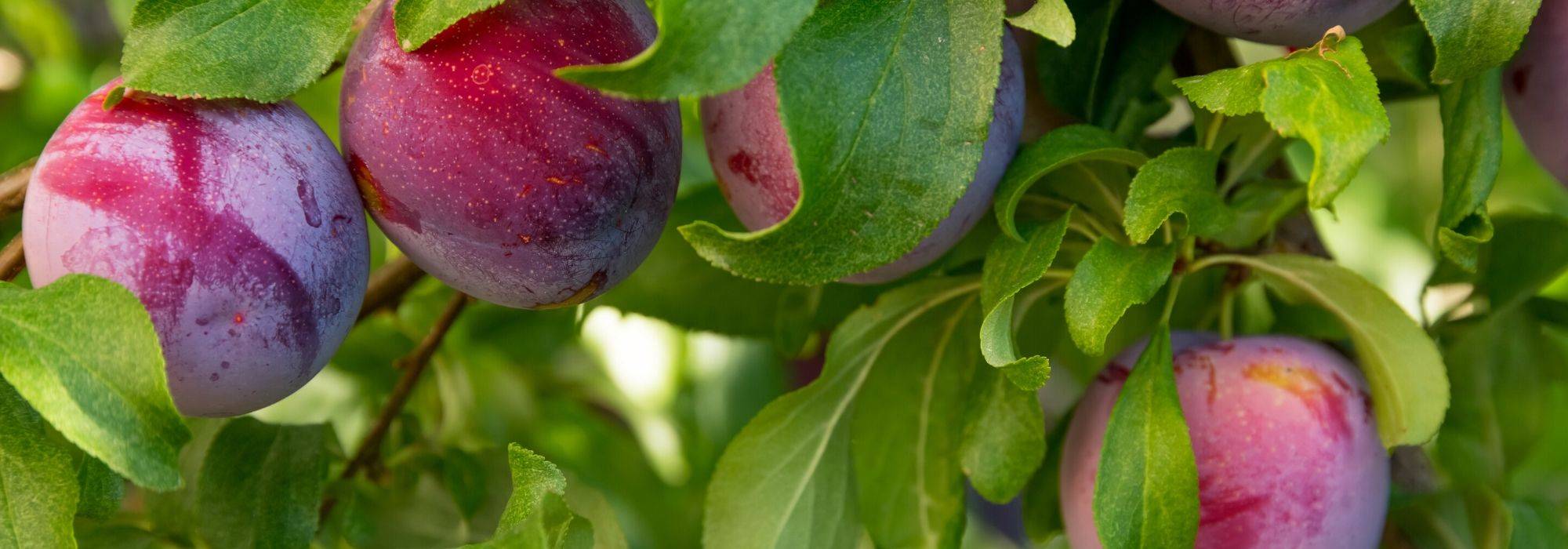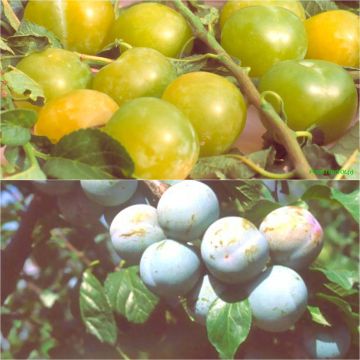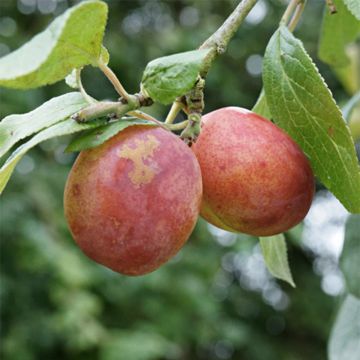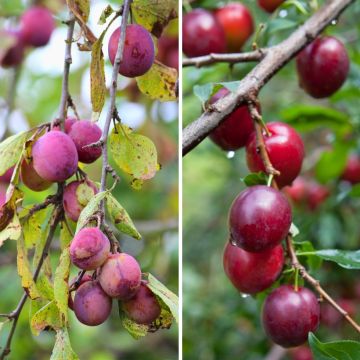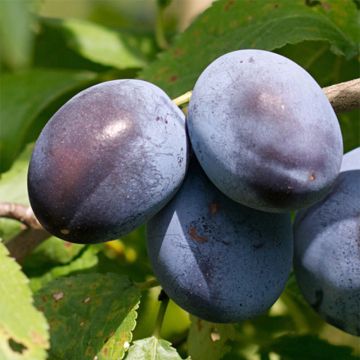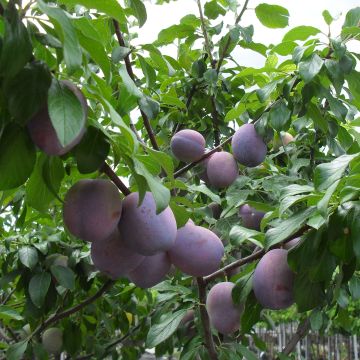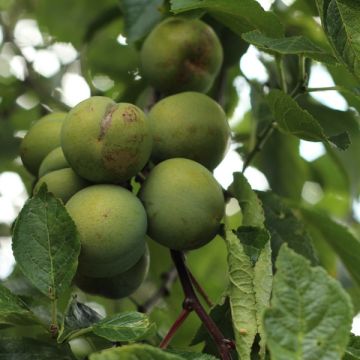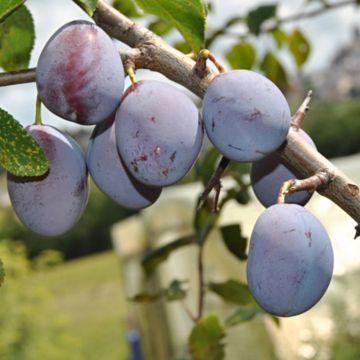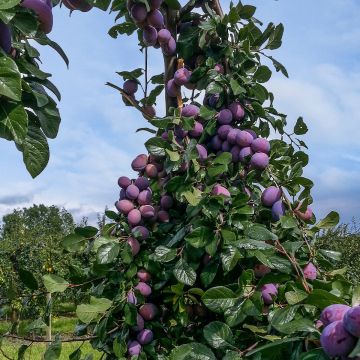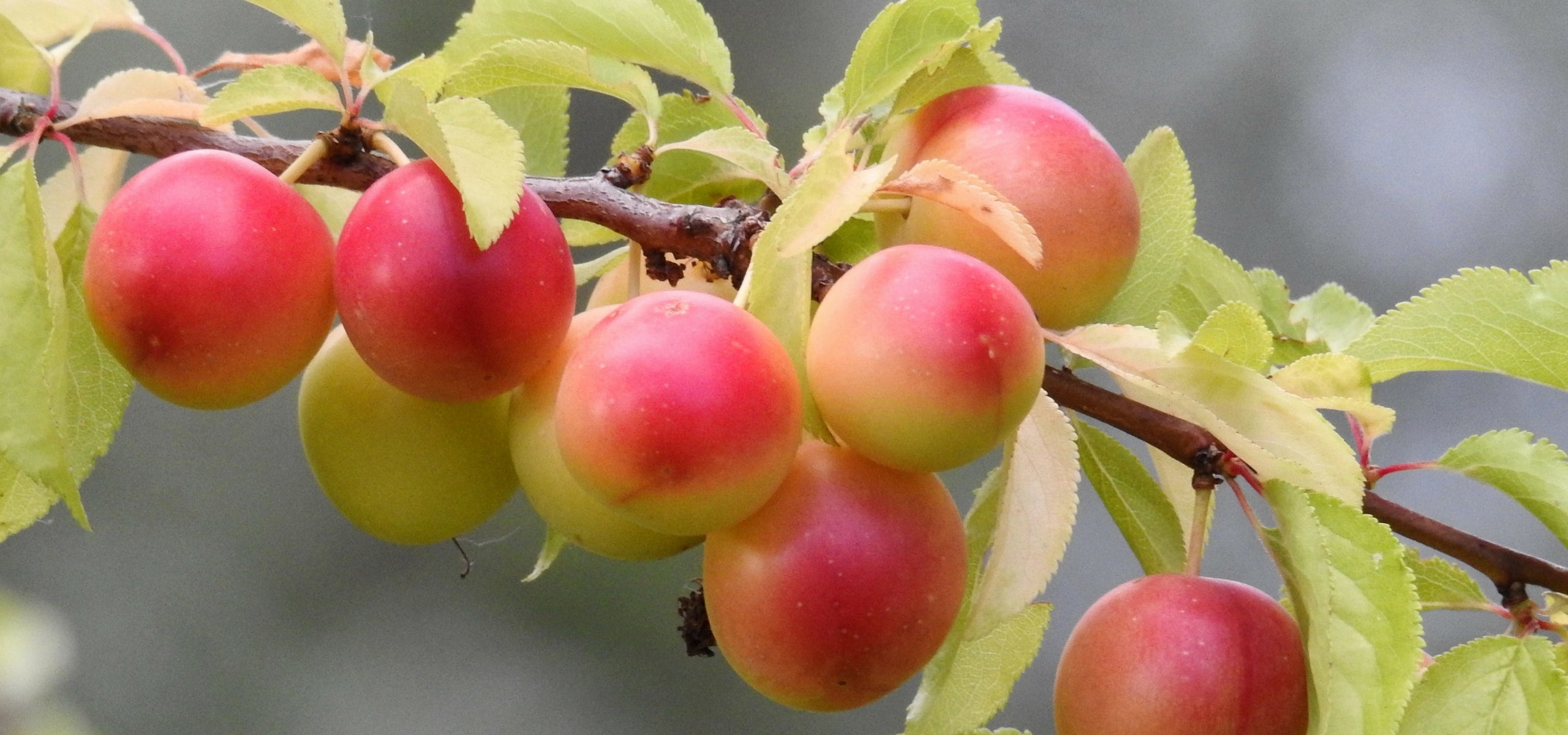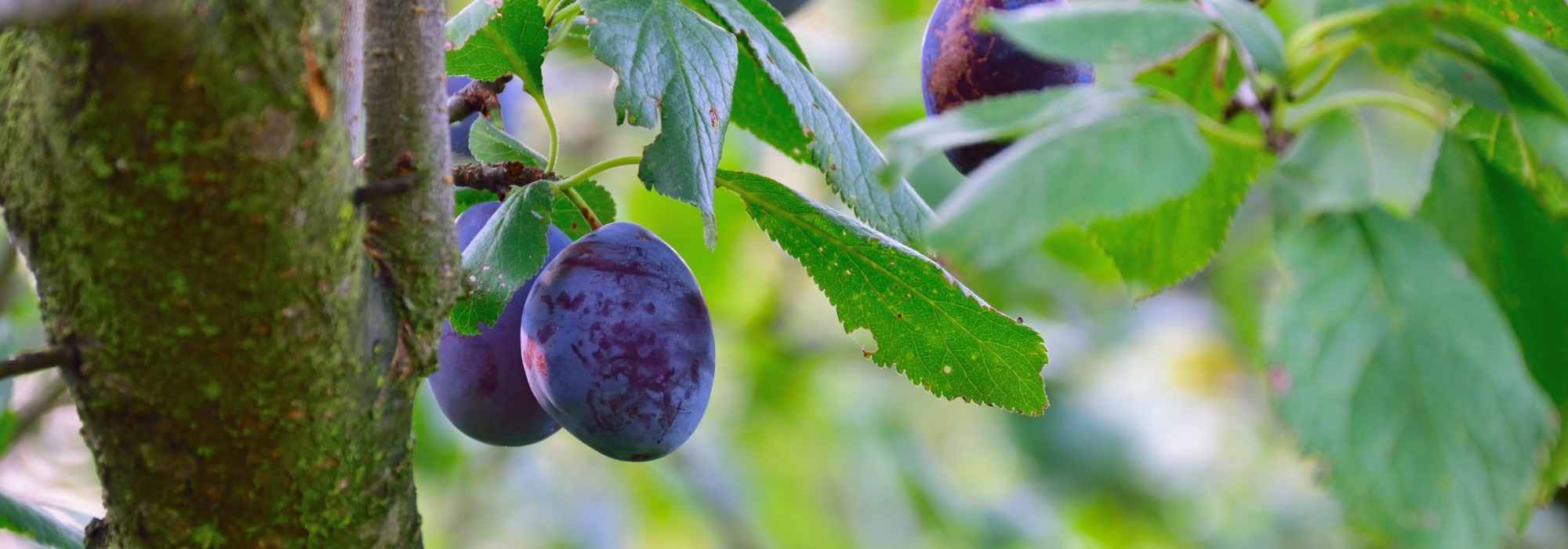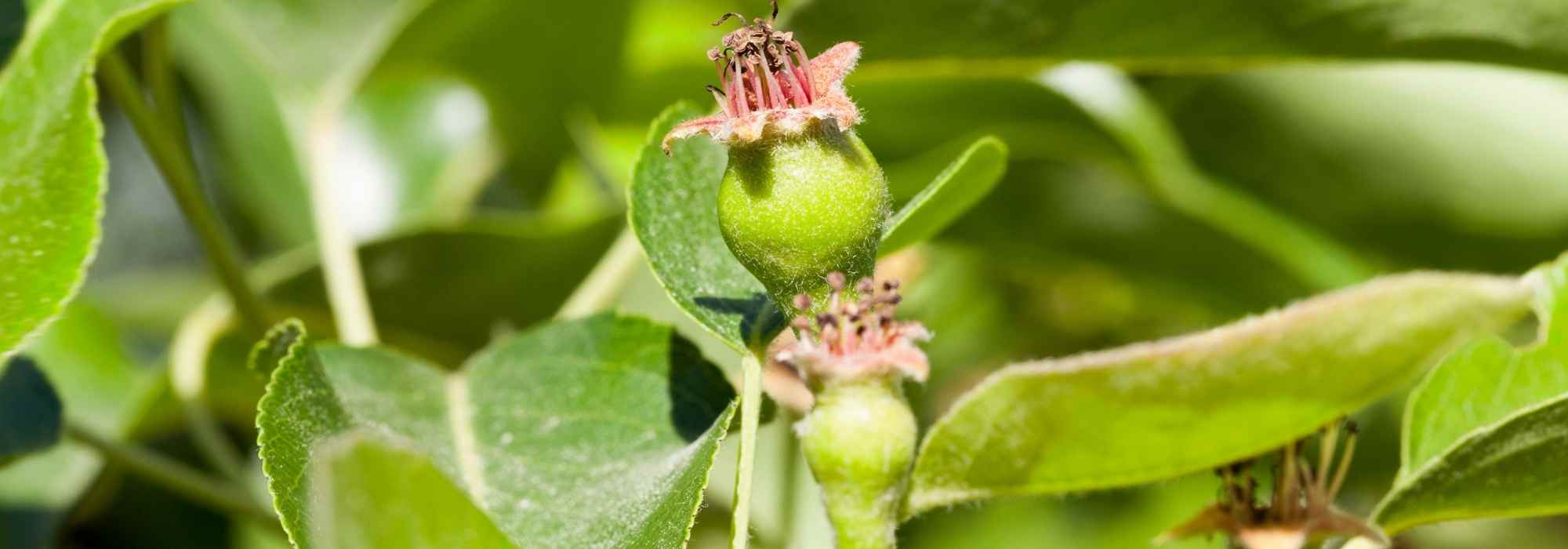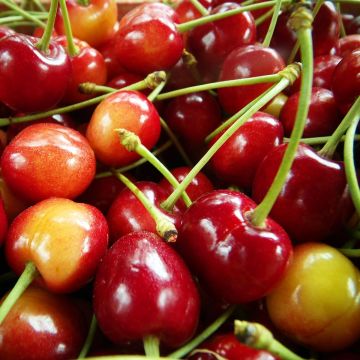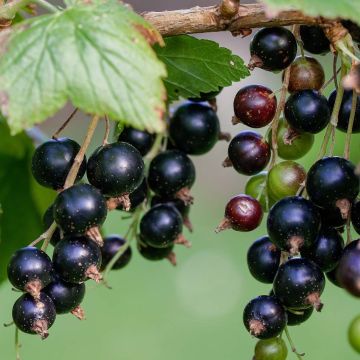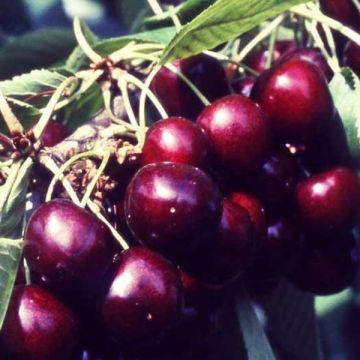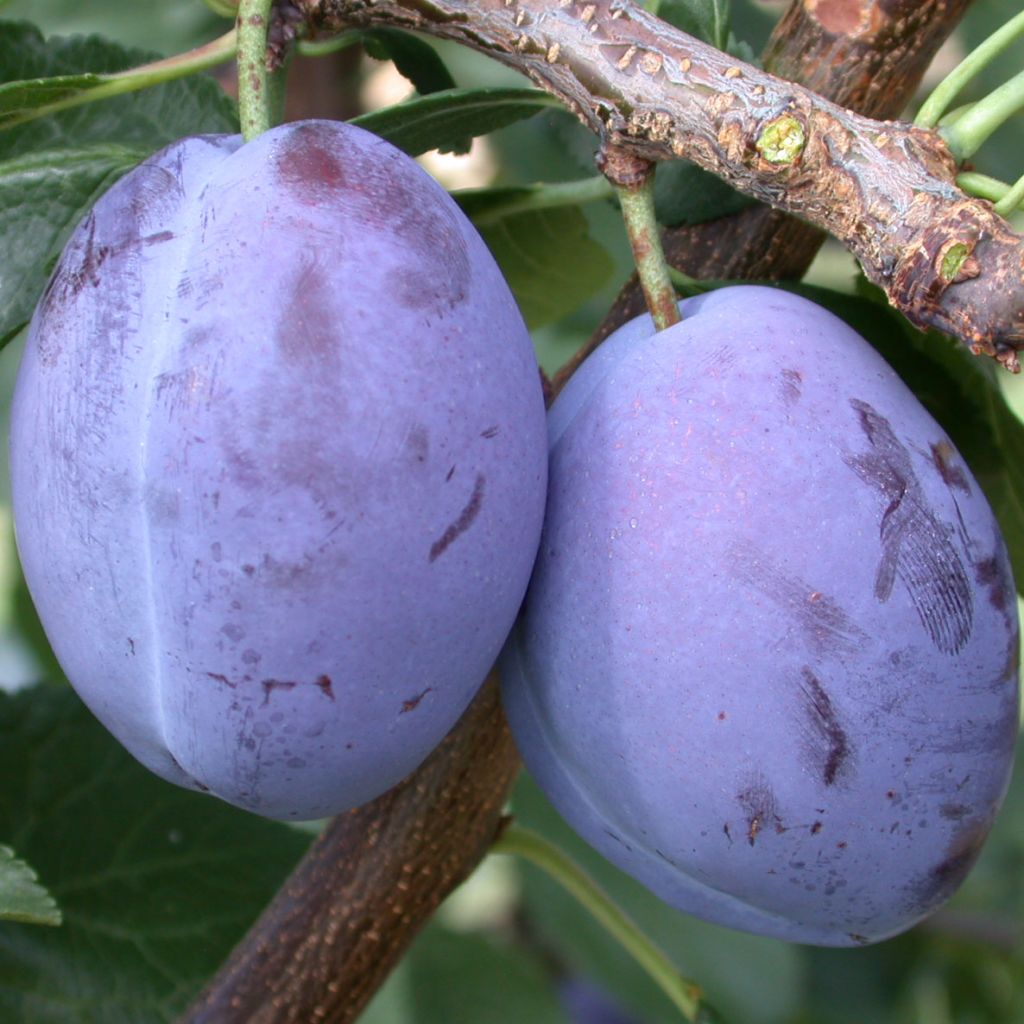

Prunier Quetsche d'Alsace Bio - Prunus domestica
Prunus domestica Quetsche d'Alsace - Organic Common plum
Prunus domestica Quetsche d'Alsace
European plum, Common plum, Garden plum
For the moment, very good recovery! So no worries.
dominique, 19/08/2024
Special offer!
Receive a €20 voucher for any order over €90 (excluding delivery costs, credit notes, and plastic-free options)!
1- Add your favorite plants to your cart.
2- Once you have reached €90, confirm your order (you can even choose the delivery date!).
3- As soon as your order is shipped, you will receive an email containing your voucher code, valid for 3 months (90 days).
Your voucher is unique and can only be used once, for any order with a minimum value of €20, excluding delivery costs.
Can be combined with other current offers, non-divisible and non-refundable.
Home or relay delivery (depending on size and destination)
Schedule delivery date,
and select date in basket
This plant carries a 6 months recovery warranty
More information
We guarantee the quality of our plants for a full growing cycle, and will replace at our expense any plant that fails to recover under normal climatic and planting conditions.
Description
The Organic 'Quetsche d'Alsace' Plum Tree is a self-fertile variety specific to the Alsace and Lorraine regions. Very productive and robust, this variety produces elongated fruits that ripen in early September. The skin is thin, reddish-purple, covered with a whitish wax called bloom. The flesh is green-yellow, firm, not very juicy, and slightly acidic, with the characteristic aroma of quetsches. While they can be enjoyed fresh, they are even better when dried. They keep very well after harvest.
The word Quetsche means, in Alsatian, Damson Plum. Quetsche plum trees originated from Syria, a country that has supplied many varieties of plums since the Middle Ages. The 'Quetsche d'Alsace' variety has been cultivated for a long time.
This fruit tree naturally grows up to 6m (20ft) tall when fully grown. The slender and bushy silhouette conferred by its upright-bushy habit is appreciated in the garden. It is only slightly demanding regarding soil type as long as there is no limestone.
Its leaves are oval, almost oblong, toothed and slightly downy.
The flowering occurs in April, which allows it to escape spring frosts. The tree is then completely covered with white flowers that appear on the previous year's branches. They are self-fertile, meaning the tree does not need to be near a different plum variety to bear fruit correctly.
The fruits, quetsches, famous in eastern France, ripen in early September.
Intended for organic cultivation, the Organic 'Quetsche d'Alsace' Plum Tree will achieve better development under certain conditions. To prevent diseases and pests, you will need to:
- choose a deep, light, rich, and well-draining soil,
- avoid planting in an area that has previously hosted other woody plants,
- prune to promote air circulation around the tree,
- thin out to prevent the development of diseases on the fruits,
- add compost in limited quantities in autumn, depending on the richness of your soil, and plant grass around the base,
- install multi-species hedges (except for prunus), piles of stones and wood, and nest boxes (for birds, voles, and bats) to attract beneficial insects.
Removing and burning the affected parts will be necessary if a disease appears. The 'Quetsche d'Alsace' Plum Tree is susceptible to rust and monilia. Treatments with fungicide in case of prolonged humidity will likely be necessary. Sensitive to summer heat (fruit drop before ripening), watering may be required in case of prolonged drought to prevent fruit loss or alteration of their taste.
Plums are consumed raw at the tree's base, in fruit salads, in desserts and pastries, and as accompaniments to meats and dishes. They can be transformed into jams, preserved fruits, compotes... They can also be used to make eau-de-vie. You can also dry them in the sun during summer, pitted and hung in a garland on a string or in the oven.
Prunus domestica Quetsche d'Alsace - Organic Common plum in pictures
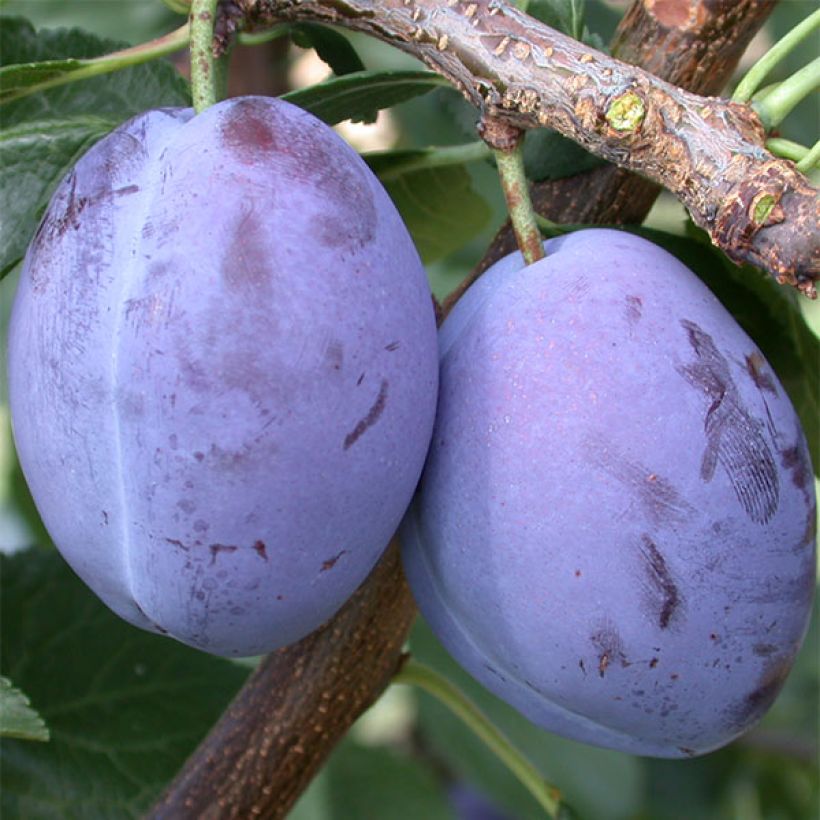

Plant habit
Fruit
Flowering
Foliage
Botanical data
Prunus
domestica
Quetsche d'Alsace
Rosaceae
European plum, Common plum, Garden plum
Cultivar or hybrid
Other Plum Trees
View all →Planting and care
Easy to grow, the 'Quetsche d'Alsace' Organic Plum Tree thrives in any light, rich, neutral or acidic soil as long as it is moist and free from limestone without excess humidity. Ensure proper drainage in the planting hole by adding a thin layer of gravel. Dig a hole two to three weeks before planting, twice as wide and deep as the pot. On the planting day, place the tree with its pot in a basin of water, allowing the entire root ball to be moistened through capillarity. Add compost to the bottom of the hole. Position the tree in the hole, filling it with soil and compost. Do not bury the graft union. Firmly tamp down the soil at the base. The root ball should be completely covered. Water thoroughly.
During winter, you can add a small handful of wood ash rich in potash to improve fruiting.
Planting period
Intended location
Care
Planting & care advice
-
, onOrder confirmed
Reply from on Promesse de fleurs
Similar products
Haven't found what you were looking for?
Hardiness is the lowest winter temperature a plant can endure without suffering serious damage or even dying. However, hardiness is affected by location (a sheltered area, such as a patio), protection (winter cover) and soil type (hardiness is improved by well-drained soil).

Photo Sharing Terms & Conditions
In order to encourage gardeners to interact and share their experiences, Promesse de fleurs offers various media enabling content to be uploaded onto its Site - in particular via the ‘Photo sharing’ module.
The User agrees to refrain from:
- Posting any content that is illegal, prejudicial, insulting, racist, inciteful to hatred, revisionist, contrary to public decency, that infringes on privacy or on the privacy rights of third parties, in particular the publicity rights of persons and goods, intellectual property rights, or the right to privacy.
- Submitting content on behalf of a third party;
- Impersonate the identity of a third party and/or publish any personal information about a third party;
In general, the User undertakes to refrain from any unethical behaviour.
All Content (in particular text, comments, files, images, photos, videos, creative works, etc.), which may be subject to property or intellectual property rights, image or other private rights, shall remain the property of the User, subject to the limited rights granted by the terms of the licence granted by Promesse de fleurs as stated below. Users are at liberty to publish or not to publish such Content on the Site, notably via the ‘Photo Sharing’ facility, and accept that this Content shall be made public and freely accessible, notably on the Internet.
Users further acknowledge, undertake to have ,and guarantee that they hold all necessary rights and permissions to publish such material on the Site, in particular with regard to the legislation in force pertaining to any privacy, property, intellectual property, image, or contractual rights, or rights of any other nature. By publishing such Content on the Site, Users acknowledge accepting full liability as publishers of the Content within the meaning of the law, and grant Promesse de fleurs, free of charge, an inclusive, worldwide licence for the said Content for the entire duration of its publication, including all reproduction, representation, up/downloading, displaying, performing, transmission, and storage rights.
Users also grant permission for their name to be linked to the Content and accept that this link may not always be made available.
By engaging in posting material, Users consent to their Content becoming automatically accessible on the Internet, in particular on other sites and/or blogs and/or web pages of the Promesse de fleurs site, including in particular social pages and the Promesse de fleurs catalogue.
Users may secure the removal of entrusted content free of charge by issuing a simple request via our contact form.
The flowering period indicated on our website applies to countries and regions located in USDA zone 8 (France, the United Kingdom, Ireland, the Netherlands, etc.)
It will vary according to where you live:
- In zones 9 to 10 (Italy, Spain, Greece, etc.), flowering will occur about 2 to 4 weeks earlier.
- In zones 6 to 7 (Germany, Poland, Slovenia, and lower mountainous regions), flowering will be delayed by 2 to 3 weeks.
- In zone 5 (Central Europe, Scandinavia), blooming will be delayed by 3 to 5 weeks.
In temperate climates, pruning of spring-flowering shrubs (forsythia, spireas, etc.) should be done just after flowering.
Pruning of summer-flowering shrubs (Indian Lilac, Perovskia, etc.) can be done in winter or spring.
In cold regions as well as with frost-sensitive plants, avoid pruning too early when severe frosts may still occur.
The planting period indicated on our website applies to countries and regions located in USDA zone 8 (France, United Kingdom, Ireland, Netherlands).
It will vary according to where you live:
- In Mediterranean zones (Marseille, Madrid, Milan, etc.), autumn and winter are the best planting periods.
- In continental zones (Strasbourg, Munich, Vienna, etc.), delay planting by 2 to 3 weeks in spring and bring it forward by 2 to 4 weeks in autumn.
- In mountainous regions (the Alps, Pyrenees, Carpathians, etc.), it is best to plant in late spring (May-June) or late summer (August-September).
The harvesting period indicated on our website applies to countries and regions in USDA zone 8 (France, England, Ireland, the Netherlands).
In colder areas (Scandinavia, Poland, Austria...) fruit and vegetable harvests are likely to be delayed by 3-4 weeks.
In warmer areas (Italy, Spain, Greece, etc.), harvesting will probably take place earlier, depending on weather conditions.
The sowing periods indicated on our website apply to countries and regions within USDA Zone 8 (France, UK, Ireland, Netherlands).
In colder areas (Scandinavia, Poland, Austria...), delay any outdoor sowing by 3-4 weeks, or sow under glass.
In warmer climes (Italy, Spain, Greece, etc.), bring outdoor sowing forward by a few weeks.






























